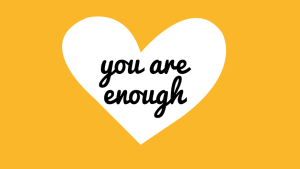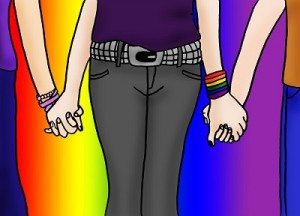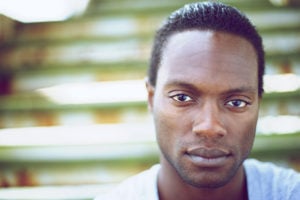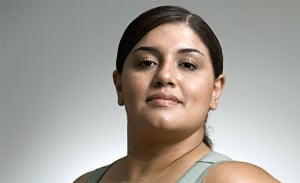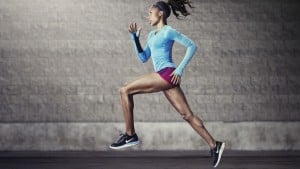
Source: ImgKid
Author’s Note: I am writing this article as someone who straddles the line between able and disabled. I can walk, run, and jump – but not without pain. I suffer from chronic nerve pain and limited ankle mobility after an exercise-induced injury, and I don’t intend to speak for an entire group and spectrum of abilities or lack thereof; this is rather meant to be seen from the perspective of someone who fully believed that ability was the “only way” for a “valuable” body to exist in the world, who now understands what fitspiration looks like from the perspective of disability. I look forward to those of you on both sides of the spectrum (and everywhere in between) to help me continue this conversation in a healthy and productive manner.
In 2010, if you had told me that you couldn’t get in shape, didn’t have time to make it to the gym, couldn’t lose “the last 10 pounds,” I would have laughed in your face.
In 2010, I had a six-pack (and an eating disorder and exercise addiction, but that’s a story for another day), and I knew that anyone who wasn’t “fit” like me was just making excuses.
In 2010, before #fitspo was even a “thing,” I had a fitspiration vision board next to my mirror – with pictures of my favorite, six-packed fitness models – as a reminder that my thin privilege was always one workout away.
And then, in 2011, while on one of my too-many and too-often morning runs, I injured my ankle – and the whole world changed.
Three-and-a-half years later, I’m still in chronic pain, and no vision board filled with condescending, highly disordered messages is going to convince me to try to get that six pack back.
In other words, I have excuses.
When we have arguments about whether fitspo is empowering or disempowering, they usually fall along the lines of “I’m a mom and want to spend time with my kids” versus “I’m a mom and I prioritize my workouts around my kids.”
Or the accusatory: “You just want to be lazy and eat potato chips and become a burden on the health system.”
What we don’t often think about is how fitspiration is highly ableist in its assumptions about health, fitness, and our ability to work out to extremes.
I’m new to the concept of ableism, since I was an unwitting ableist in my personal trainer/bodybuilding days. Disabilities were pitiable and regrettable, but nothing that concerned me.
And that’s exactly the problem: Ableism is more than just active discrimination (pointing, staring, asking rude questions, mean jokes, and so on).
Ableism is an actual dismissal of disabled bodies – sometimes perpetrated without thinking about it.
Since becoming somewhat disabled by chronic pain, I’ve become acutely aware just how ugly this dismissal of the disabled body can be – and how fitspiration is one of the ugliest and most blatant and pervasive dismissals in our gym-obsessed first world culture today.
More than ever, I think it is important for those who use fitspo as a motivational tool to understand the assumptions that it makes about ability and how those assumptions affect our cultural narrative about the “ideal” body.
To help start the conversation, here are three major assumptions that fitspo implicitly makes about ability.
1. Fitspo Makes the Assumption That Ability Is a Choice
Fitspo says that:
- You are able to choose whether or not you want to lift weights or train heavy.
- You are able to choose whether or not to push yourself harder to work through pain.
- You are able to choose how your body will ultimately look, feel, and perform.
And while there are plenty of rebuttal articles floating around the Internet about how genetics and body types are “handicaps” to achieving a certain aesthetic (i.e.: not everyone can get the same results even when they train and eat in the same ways), no one talks about how real handicaps – both visible and invisible – come into play.
When an image on your Pinterest board, for example, implores you: “When you’re struggling, imagine your dream body” (overlaid upon a set of washboard abs), it makes the assumption that simply deciding to change your body will lead to a transformation.
And fitspiration is obsessed with transformation. With the ability to achieve transformation.
The trouble is that, for people who have permanent disabilities or chronic pain, for example, simply “putting your mind to it” won’t regrow a limb or un-damage your nerves.
Sometimes, you can make the decision not to let your limitations exist, and, frustratingly, that still doesn’t mean that those limitations will go away.
Fitspo implicitly assumes that a “dream body” is a “whole” body or a “normal” body – an “able” body that can (and with the right amount of effort, imagination, and determination will) achieve a state of “perfection” or fitness.
It completely ignores the possibility that some bodies cannot or will not transform into some aesthetic “ideal.”
Ability is not a choice, and fitspo – which, by the way, is not just limited to fitness Instagram accounts but also shows up in our advertising, comes from the mouths of our news anchors and favorite celebrities, and even becomes the mantra during our office weight loss challenge or Biggest Loser pool – completely ignores the fact that not every body can or will be able to transform.
And it’s insensitive at best (and malicious at worst) to parade the assumption that all bodies are capable of transformation.
2. Fitspo Makes the Assumption That an Able Body Is Earned
Any of you former Boy or Girl Scouts out there remember earning merit badges?
Every patch (so proudly) displayed on your sash or vest was a testament to an achievement, bestowed only after such “honorable” struggles as surviving your first camping trip or selling enough cookies to blasé strangers outside of the grocery store.
Fitspo is a lot like a merit badge – only instead of proving yourself merit-worthy with an adornment for your body, it says that the body itself is the adornment.
And for the merit of overcoming an obstacle or achieving an outcome, we say that it is not just earned, but also deserved.
Fitspo says that exertion of “good” qualities – like willpower, determination, and perseverance – will always result in a merited payoff: a body that can be displayed and paraded not only as “normal” and “able,” but as ideal.
When such a payoff is touted as the highest form of achievement, we make the implicit statement that a body that cannot achieve this look is not good, not worthy, not deserving of this able privilege.
Which prompts the questions:
Am I therefore deserving of a disabled body because I cannot power through and overcome? Am I deserving of a body that you determine “less-than” simply because of the circumstances of my ability?
Taking the transformation assumptions one step further, fitspo implicitly says: You didn’t transform not just because you couldn’t, but because you don’t even deserve it.
Again, even if it’s not said explicitly by the person who is making their public vision board to inspire themselves to transform their own able body, it is still a dismissal of all of the bodies that cannot participate in the social capital of aesthetics.
Now here’s the thing: I fully anticipate the counter argument that there are those out there who are using fitspo in a “healthy” way, as a motivation to better themselves or make important changes in their lives. I understand that.
However, by using this specific form of aesthetic/reward as the main driver of motivation, it still creates and perpetuates a culture of ableist privilege: Your reward for being “good” is the ability to have this body.
So while on the individual level, it may seem like a nice merit badge to have on your sash, fitspiration must be examined from the broader cultural perspective: What does this image say about how we look at and value bodies?
3. Fitspo Makes the Assumption That the Disabled Body Is Something to Be Overcome
So here’s a quick word on those of you who will bring up the argument that there are “able” disabled bodies:
Inspiration porn is just as disempowering as fitspiration.
Inspiration porn – the YouTube video of a person winning a marathon on prosthetics, a picture of a Crossfitter jerking a barbell with one arm, the heartwarming news story about a disabled dancer who takes to the stage again – is not meant to be inspiration for the disabled person.
It’s inspiration for the able person – inspiration and, like most fitspo, shame.
“Look,” it says: “If someone who shouldn’t be able to achieve this state of fitness does, then what’s your excuse? You, able-bodied person, can do it. You, by default, can.”
It is absolutely wonderful that there are disabled individuals who are able to overcome perceived limitations, who make choices to carefully train for a sport or an activity that might otherwise be inaccessible.
But that doesn’t mean that every disabled person who cannot use their body in that way has made the choice to be “lazy” or to rely on their disability as an excuse not to strive for a certain physical ideal.
It puts disability on display. The prosthetic takes on the same quality as the disembodied abs – an object to be gawked at.
When the body on top of the prosthetics has the abs, it only amplifies the inspiration-pornography of the situation.
This is for my able-bodied enjoyment – a reminder that I have an able body and a responsibility to use it.
And the fact that it is held up as a shaming tool, explicitly for able people and implicitly for disabled people, makes it even less empowering.
Fitspo of the inspiration porn variety splits us into able versus disabled, makes the achieving disabled body into an “other” to be gazed upon, but ultimately discarded in favor of the able-bodied person’s self-interest.
It just reaffirms the perceived validity of fitspo in the first place: I need to be inspired to look this way, and that inspiration comes from motivation via shame.
***
At the end of the day, fitspiration in all of its forms is a dangerous “tool” for motivation because it creates so many competing narratives about what a body is supposed to be – and ultimately erases different bodies from the narrative.
I know that many people believe that they need the shame, the inspiration porn, and the admonition to push their able bodies through pain in order to be (read: look) healthy, but I also encourage those same people to ask why this body, the fitspiration body, is their ideal body.
To ask what striving toward this body actually does for them – and for those who do not have or cannot achieve the same state.
It wasn’t until I injured myself and had to change and limit my activity, to let go of my beliefs about what bodies were “supposed” to be, that I truly began to look around and see the bodies that I had made invisible through my striving for the fitspirational ideal.
While I wouldn’t wish injury or chronic pain on anyone, I’m grateful that my injury gave me the opportunity to reexamine and ultimately reject the narrative about “right” and “wrong” bodies to which I was willfully contributing.
By rejecting fitspo, what I gained was full sight of the entire beautiful spectrum of incredible, beautiful people who are just trying to live their healthiest, happiest lives – to the best of their ability.
[do_widget id=”text-101″]
Kaila Prins is a Contributing Writer for Everyday Feminism and a health coach who works with women who are ready to stop “recovering” from disordered eating and start “discovering” their true identities. Kaila’s health coaching services, as well as her blog, can be found at In My Skinny Genes, and she hosts a weekly podcast called Finding Our Hunger. She also counts characters and not calories on Twitter @performingwoman.
Search our 3000+ articles!
Read our articles about:
Our online racial justice training
Used by hundreds of universities, non-profits, and businesses.
Click to learn more







